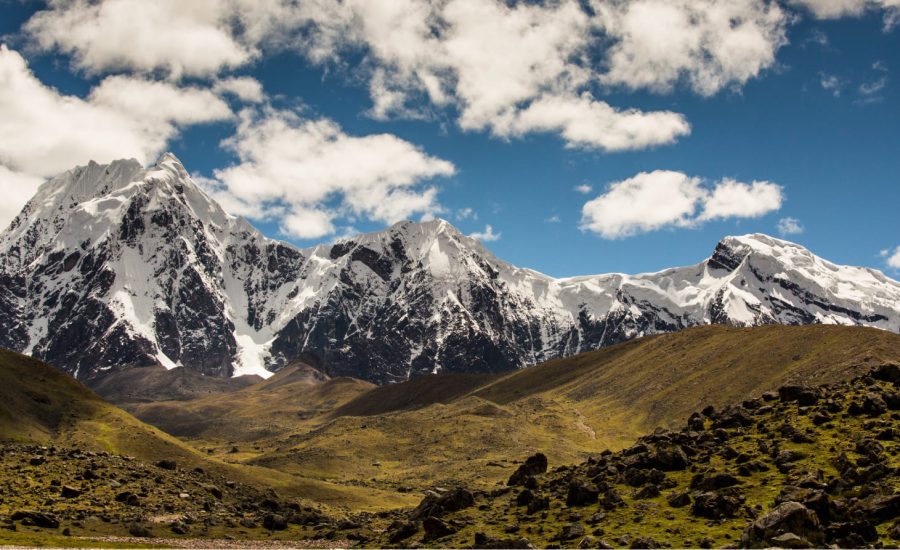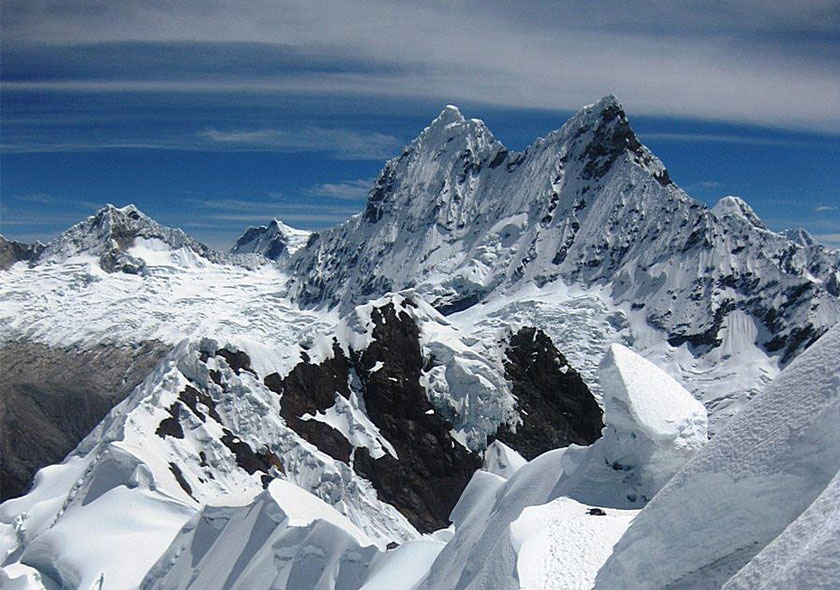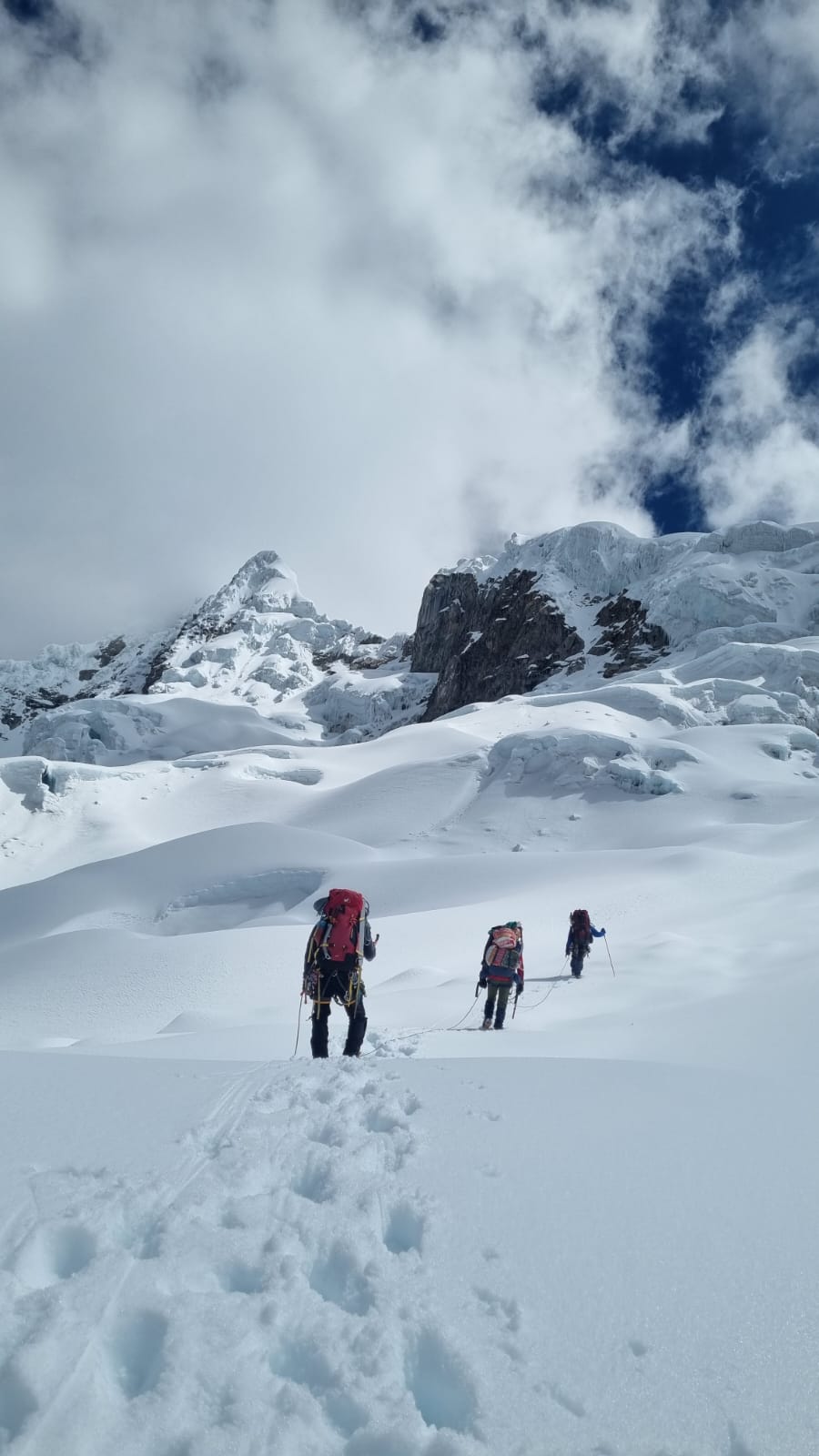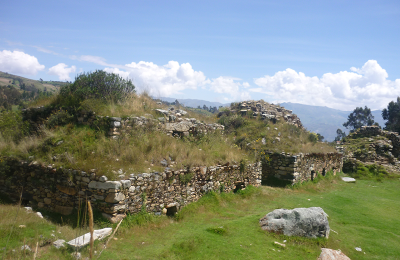
Overview
- 21 days / 20 nights
- Moderate
- May - Setember
Peru`s Cordillera Blanca is a great to climb because the weather is usually stable and the mountain are magnificent. All the ascents are straightforward and the level of mountaineering is ideal as an introduction to alpine-type climbing. The first trekking days are purposely short and steady allowing time for Good initial acclimatisation prior to the climbs.
We visit three different locations in the ‘Blanca’ and expect to climb 5 peaks at around 5500m.
Maparaju (5326m)
Huapi (5421m)
Pisco 5752m)
Urus Este (5495m)
Ishinca (5530m)
There are 5 nights in Hotels and 15 nights camping.
The trip is graded ‘tough` and Will require Good all round fitness. Previous experience of using crampons and ice axes Will be very useful bit is not essential. The climbing generally is mainly straightforward glacier travel and with snow and ice. Occasionally the routes may be pitched for short distances mainly to cross crevasses.
The management of the trip and guiding is joint venture between a Wetern leader and our very experienced Peruvian guides.
Itinerary
Day 1
Arrive Lima Hotel.
Day 2
We leave Lima early for the eight hour bus journey to Huaraz.The first part of the journey follows an arid desert coastline with disturbing evidence of Peru`s burgeoining urban population in several overflowing shanty settlements. As we head up into the mountains the landscape quickly becomes less sobre and rural life looks to the far preferible. Once over the pass of Conococha we have a first glimpse of snow covered mountains and after a long day we finally arrive in Huaraz, the Gateway to the Peruvian Andes. Hotel(B)
Day 3
Huaraz, at 3100m above sea level is the capital of Ancash province and the trekking centre of the Cordillera Blanca.There is time to relax. Recover from the travelling and start getting used to the altitude. We usually arrange an afternoon acclimatisation walk beyond the town and up to a Pre Inka temple. A descent through fields finishes at the thermal pools at Monterrey. First acclimatisation tip-drink plenty of wáter (B)
Day 4
A short drive up to the ountain Hamlet of Pitec (3850) where we walk and scramble up to the beautiful Laguna Churup (4485m), with Good views of Churup Peak high above us. We desend to our camp at Pitec. A Good acclimatisation day. 6 hours (B, L,D)
Day 5
An atractive walk up to our base camp. We follow the main Quebrada (valley) Quilcayhuanca. Waterfalls tumble down the valley sides and condors are regular visitors here, often soaring overhead in the thermals. Soaring alpine peaks dominate the skyline. 6 hours. Camp.400m.(B, L, D)
Day 6
We hike up to Laguna Cuchillacocha (4650m) and to Laguna Taullicocha with the graceful Pyramid of Tullparaju (5787m) looming high above the lakes and descend back to our camp. Climbing high and returning lower to sleep is Good for acclimatisation. 6-7 hours (B, L, D)
Day 7
Rest day . Acclimatisation should be well achieved by now. A chance to rationalise personal climbing equipment, rope management and moving together techniques. (B, L, D)
Day 8
Our first route is the straightforward SW ridge of Huapi (5421m). An early start should see us at the Summit for sunrise and views of whole panorama of the Cordillera Blanca. Return to base camp. (B, L, D)
Day 9
Today we move our base camp to a new location. The Quebrada Cayesh. A 3 hour walk higher up the valley brings us to the new camp side closer to the next peak 4100m. (B; l ,D)
Day 10
An attempt now on the excellent south west ridge of Maparaju (5326m), reputedly the best easy route in the range, but be prepared for a long day. An old mule path leads to the glacier edge. Climbing the glacier to the col we then follow a snowy ridge to the Summit. Amazing views to the pinnacle of the Cayesh and the square-faced 6595m. Huatsan massif, one of the most unspoilt places in the Cordillera Blanca. (B; L, D)
Day 11
Return back down the valley to Pitec (5 hours) where our bus collects us for the ride back to our Huaraz hotel and hot showers. B, L)
Day 12
A full day to relax and enjoy the town to the full before we head off again. Consider hiring a mountain bike and guide to bike the village trails around and above the town. (B)
Day 13
To Pisco. The entire range of the northern Cordillera Blanca rears up from the main road as we drive west, dominated by the huge builk of Huascaran, Peru`s highest at 6768m. We Will pause en route and reflect at the memorials to Yungay, a thriving town of 25,00 people,horrifically obliterated in 1970 by a tidal wave of mud, ice and rock unleashed by an earthquake from the slopes of Huascaran.
The Llanganuco valley is as dramatic as any which dissect the Blanca range, It is surrounded by glistening peaks. The walk to base camp is easy now we are acclimatised and we may even beat the donhey team there! Pisco can be popular, so expect a few other people to be around. 4600m. 4 hours. (B, L, D)
Day 14
From base camp we need to carry all the gear to camp 1. The walk is entirely on moraine and rocky glacier. For some of the way there is a track, but there is also a fair bit of boulder hopping to be done. You Will have to carry your sleeping bag and mat, plus all the clothes you need for the ascent , and of course your ice axe and crampons. Any help with other gear is welcome but not essential . There is a small lake for wáter and enough flat spots for about 10 tents, so we will fit into as few tents as posible, to sabe on space and weight! The panorama from here is fabulous; a perfect sunset makes it even better. 5000m. 2-3 hours. (B, L, D)
Day 15
We leave the camp at about 2am, aiming to arrive at the top of Pisco (5752m) for sunrise. The climb is steady and never steep, the views of the whole range superb. We are on snow after 30 minutes, and move together, roped in groups of three or four.
We would expect to be back in camp 1 by 10 or 11 a.m for a brew and a quick snack. After a break we carry our gear back to base camp, which takes about 1 1/2 hours. We spend the night in base camp. (B; L, D)
Day 16
We descend easily to th road and our waiting vehicle and drive back to the main highway.The drive to the Ishinca valley roadhead at the village of Collon or Pashpa village takes about 2 hours. Our walk to Ishinca base camp (4100m), is a steady climb up through a steep sided valley. The rock scenery is magnificent and eventually the gorge opens out into high pàsture where we can establish a confotable base camp. 6 hours. (B, L, D)
Day 17
Urus Este (5495m) is an attractive peak that ca be climbed in a shortish day from our camp. In recent years its snowfilelds have reduced considerably and we may require cramps for short time. Urus E is always a Good measure of fitness and acclimatisation with a steep and sustained siz zag path rising almost from the tent door. We follow snow slopes until a final scrambly rocky ridge (sometimes snow) leads to the narrow Summit. The panorama from here is sturnning with a first really Good look at the line of tomorrow`s route on ishinca. We descend as the snow softens in the sunligh. 8 hours. (B, L, D)
Day 18
Ishinca. We dross the valley and follow the clear path winding its way to the ishinca glacier. As we approach the head of the valley and its glacial lake the sun lights up the huge peak of Ranrapalca ahead. From the glacier edge the climb meanders up straightforward snow slopes to the Summit of Ishinca (5530m). The route is not difficut but the Summit has a steeper final section. A big mountain and great views 8-10 hours. (B; L; D)
Day 19
A freewheeling, end of trip walk-out back down the valley. The bus is waiting to take us back to Huaraz, to hot showers and a celebratory night out on the town. (B, L)
Day 20
The long return bus ride tio Lima, Usually a lively ride with re-oxygenating blood, a sense of achivievement, relaxation and a welcome rest from activity. The trp ends back in Lima. If there is time before your return flight, explore the city /with care!), visit the gold museum or the cotacombs or shop for a few last minute wall hangings! (B)
Day 21
Arrival in USA or Europe the following afternoon
Included
- Personalized service to customers with bilingual at the airport and in the city of Lima guides.
- Helpdesk pick up and transfer to Lima's Jorge Chavez International Airport. Airport Hotel chosen.
- Assisting customers with transfer person, the hotel to the bus station and visiversa in Lima and Huaraz.
- City tour in Lima if customers require
- Private bus Lima - Huaraz - Lima.
- Transport during the days of acclimatization.
- Transport. to the point of beginning of the Trek and pick the end of trek. Huaraz-Hotel
- Bus ticket. Lima - Huaraz-Lima. individual customers.
- Logistic Team during the trek.
- Official bilingual guide for the trek (Castilian, English).
- Official Guide UIAGM high mountain (Castilian, English) certification.
- Cook with extensive experience and high mountain trek.
- Assistants with extensive experience.
- Horsemen and donkeys (10 kilos of luggage, personal clothing and equipment trek).
- Box lunch / hot lunch.
- Full meals as breakfast, snack, lunch and dinner during the trek (vegetarian option).
- Dining tent, kitchen, bathroom and shower tent.
- Tables, chairs with a backrest and lamp room.
- Kitchen and all kitchen amenities.
- Personal tents and personal bi, high quality. Harwear Mountain, North face, Vaude and Salewa and Newfoundland. Etc.
- Air mattress and sleeping mats
- Basic first aid kit.
- Certec Bag, camera iper barrel in case of emergency, for customers who suffer altitude sickness that can withstand hours or days / Oxygen.
- Emergency horse to evacuate customers if necessary.
- Payment of entrance fees to places to visit in Huascaran National Park.
- Nights hotel in Lima and Huaraz.
Not Included
- Extra Hotels in Huaraz and Lima.
- Extra Meals
- Laundry
- Extra Tours in Lima and Huaraz.
- Extra Tips at airport and trek.
- Alcoholic drinks
- Craft.
- Sleeping bag.
- Life insurance while in Trek / Peru
- Personal specific medicines.
- Airport tax in / outbound flights.
- Domestic flights in Peru.
- Extra transfers in Lima and Huaraz.



